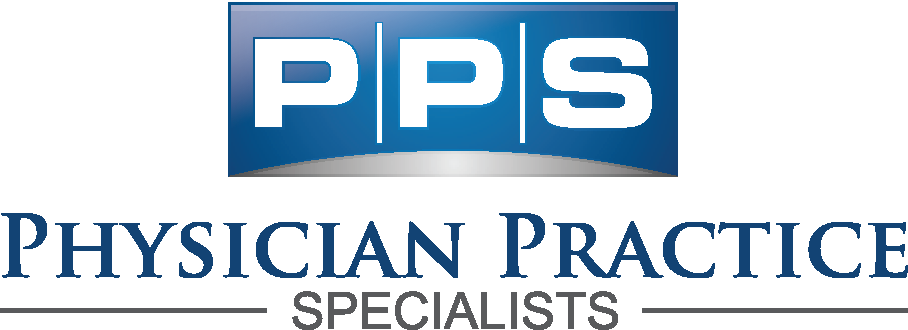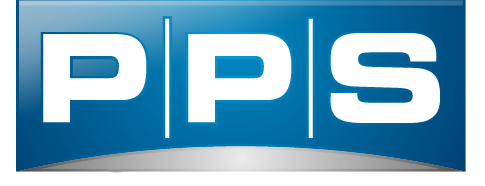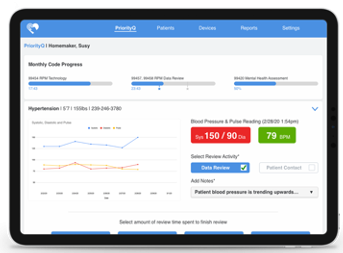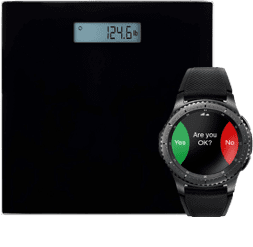No one is entirely sure of the extent of these changes but one thing we can all be sure of is that it has altered our behavior and what’s important to us. In this article, we’ll cover some general tips, ideas and some strategic objectives that should be tackled as a result of Covid-19.
Technology & Access
We would first like to talk about technology and accessibility. For many offices, this has been a major priority and a critical element of them staying in business through this difficult time. It’s not just about how accessible you are as a practice but also how well you are communicating this to your patient base.
- Hey, I’m Open. The first thing you should already be doing is communicating that you’re open for business and accepting new patients. Early on there were numerous offices considered provider offices considered nonessential which left many patients wondering when they would be able to see their provider. Effectively communicating that you’re open is critical during this time of flux. You can do this with signage on your office, online and through social media. You need to ensure your patients have the latest information regarding your hours of operation and protocols for new patients. For active patients that have agreed to receive texts, sending out a mass text with updates regarding your hours of operation and a link to your website with new policies is very effective. You can also include a link to schedule a telemedicine visit if this is something you’re offering. This is a good place to remind you about including email and texting consents in your paperwork if it’s not already there.
- Using Website & Social. Websites and a social media presence have moved beyond being nice features to being absolutely critical. There is no reason that your practice shouldn’t be harnessing the capabilities of social and web platforms to communicate with your patients and provide tools that enhance their experience. Online appointments are just the beginning. You should have signs in your office and within all of your communication encouraging your patients to subscribe to your website via email or follow your social media accounts. There has never been a less expensive way to communicate. Don’t neglect this area of your practice because your competition certainly isn’t. We actually love it when practices use their social media accounts and/or YouTube to post video messages to their patients.
- Telemedicine Now. If you haven’t started offering some form of telemedicine then now is the time to jump on this train. Telemedicine is going to be a primary method of seeing patients for the rest of your career. With Covid, commercial insurance payers and Medicare have relaxed many of the standards of care that previously stood in the way of organizations offering telemedicine. These relaxations include the ability to use a broad variety of platforms for telehealth consultations as well as a broadening of services you can bill for. There are new modifiers with expanded coverage of specialties and services under telemedicine. In addition, many payers have made the credentialing/contracting process for telemedicine easier. While they have temporarily instituted a reprieve of some of their requirements, it’s important that you ensure your payer agreements are set up to bill for telemedicine once the pandemic has subsided. Consult with your EHR provider and let them know that you would like to start offering telemedicine visits to find out if they have a fully integrated platform that you can jump on which will interface with your system.
- Real Time Chat. One other thing you can do to enhance accessibility which we really like is real time chat on your website. This is something that is still somewhat nascent in healthcare but can really help differentiate your practice from your peers. Anything that communicates to your potential patients that your practice has adopted the latest technology is certainly worth considering. It’s actually a more cost effective way to communicate as one receptionist can have multiple chats going on at the same time. It is also something easily done by remote employees so long as they have access to your practice management system.
- Remote Patient Monitoring. Adding remote patient monitoring is another example of something that will improve patient care, reduce ER visits, increase revenue and help you differentiate your practice from competitors. With RPM you can monitor a number of important health factors Activity, Blood pressure, Glucose monitors, Weight, Respiratory flow rate & Pulse oximetry. RPM is a critical addition to any practice routinely treating patients with chronic conditions or with a large Medicare patient base. In addition to improving patient care, you will see over $250,000 annually if 200 patients are enrolled.
Telemedicine & REmote Patient Monitoring Billing Basics
A) Telephone Services:
Codes to Bill (FYI the G codes are for Medicare, the 9xxxx codes are for all other payers):
-
98966 (5-10 min)
-
98967 (11-20 min)
-
98968 (21-30 min)
Qualifying Circumstances:
- Non-face-to-face assessment/management provided over the telephone
- New or established patients
- Not related to episode of care within the last 7 days
- Not billed if telephone service results in decision to see the patient within 24 hours or soonest available appointment
B) Online/Skype/Digital Format:
Codes (FYI the G codes are for Medicare, the 9xxxx codes are for all other payers):
-
98970/G2061* (5-10 min)
-
98971/G2062* (11-20 min)
-
98972/G2063* (21+ min)
Qualifying Circumstances:
- Patient-initiated through the electronic health record (EHR) portal, secure email, etc.
- New or established patients
- Require evaluation to inform management of the patient (mandatory E/M component)
- Billed once for cumulative time devoted during a seven-day period
- Documentation and permanent storage of encounter required
- Place-of-service code 11—Office is primarily used for typical face-to-face procedures provided in audiology offices.
- Place-of-service code 02—Telehealth indicates that the services were provided through a telecommunication system.
Safety & Communication
As consumers, I think one of the most significant changes is in terms of our priority for safety. Going to the doctor has always been something dreaded by most patients due to the time and potential bad news involved. With Covid, we are now increasingly aware of the dangers of visiting any facility especially those that routinely house sick individuals.
You have to ask yourself, “What can I do to assuage these concerns without sacrificing my business?”
That’s not an easy question to answer but we’ll provide a few tips here.
- Active Communication. The first tip is regarding communication with your patients and potential patients. For the websites we’ve built and manage, we’ve instituted a popup document (as seen here UroCoach.com) communicating the steps each practice is taking to ensure safety. Prioritizing the safety of your patients should be at the forefront of everything you’re doing.
- Policies. Have signs put in your office and on your front door stating your policy regarding masks, temperature checks, availability of masks, sanitation steps and social distancing requirements. It’s also a good idea to add a message to your phone system if possible stating these policies. It’s important that you mitigate the risk of exposure to your patients regardless of your personal beliefs regarding Covid. Make sure your waiting room can accommodate the patients waiting to be seen without having them sitting on top of each other.
- Touchfree Environment. Provide a touchless visit experience whenever possible. This would include allowing the patient to provide their medical history verbally or through their phone, having doors opened for them and touchfree payment processing. In addition to the safety of your patients, it’s critical that your employees feel safe coming to the office each day.
- Waiting Safely. Some offices have instituted more stringent requirements for patients which includes having anyone with symptoms, or those at high risk waiting in their vehicle and receiving a text when it’s their turn to be seen. We appreciate and applaud practices doing this as sitting in any office, regardless of the measures taken to ensure safety, still feels a bit nerve racking. If your waiting room can be bifurcated with a sick and well section, this is also really nice. This is especially useful for those treating or diagnosing Covid cases. One easy way to encourage/require distancing in your waiting room is by simply removing chairs to ensure adequate spacing. It’s also good practice to mark the floor with where to wait when checking-in or out.
- Using Google. Use your Google business profile to communicate updates to your business including hours, Covid policy and any opportunities for telemedicine.
Compassion
As medical providers, you truly are serving on the front line of the battle against Covid. You are literally leading the charge against this virulent disease. One of the best things you can do to lead us out of this pandemic is to stay open, safe and steadfast in your desire to help your patients. Here are a few reminders that will help you through this pandemic and thrive on the other side.
- Compassion. While this seems somewhat elementary, you may be surprised at how challenging this simple emotion is for many providers. It’s likely due to a career of feeling under-appreciated and underpaid for their service. Even if it’s a conjured emotion, it’s important that your patients feel that you care about their situation. Each person has been touched in some way by this pandemic and their visit with you should leave them feeling cared for physically and emotionally. You might say, “well, I’m a surgeon and they just be thankful that I’ve taken care of their issue, I’m not a counselor or mental health therapist.” While is true for the vast majority of providers, it’s not true during this time. Wearing a hat of compassion in every interaction will set you up for success for years to come.
- Ask Questions and Listen. Practical things you can do are just asking questions and giving them time to respond, don’t just make the visit about their chief complaint. Listen to them, for all you know they could have just lost their mother and still haven’t been able to have a funeral or had to postpone their dream wedding for next year. With record suicide rates, the unfathomable disruption to “normal” life and our limited social interactions, your conversation could very well be what keeps someone from walking off that fateful ledge.
Personal Experience. As a father of four beautiful children(12, 9, 7 & 5 months old), I can speak firsthand how challenging this time has been for our family. While it’s not your job to know about my personal life, you have to realize that you may very well be the only face-to-face conversation I’ve had in a while. Giving birth to a baby is always challenging but giving birth in a hotspot in the state of California in April ended up being one of the most stressful things I’ve ever endured. This was only to be closing followed by the incredibly difficult time afterwards. So much so that it saw my family relocate back to Florida to be closer to family. Losing all help and with no family able to visit, while also being forced to homeschool our three kids including one that is special needs, made what should have been a beautiful time for our family one of challenge, sacrifice and frustration. We didn’t have access to what I would consider empathic or compassionate caregivers primarily because I think everyone was still seeking to understand exactly what they should/should not do. I only am saying this because knowing someone’s story is one of the best ways to communicate that you care thus building patient loyalty. The majority of healthcare practitioners across the country are truly remarkable. We are privileged to live in such an incredible country with access to some of the best care on earth. As healthcare has evolved and providers have been stretched to their brink, I just want to provide a simple reminder that compassion should not be overlooked as unnecessary or inconsequential. It’s so well said in the “Oath of Maimonides”, which many of you are likely familiar with, that I’ve added it here as some encouragement through this trying time.
“The Oath of Maimonides”
The eternal providence has appointed me to watch over the life and health of Thy creatures. May the love for my art actuate me at all time; may neither avarice nor miserliness, nor thirst for glory or for a great reputation engage my mind; for the enemies of truth and philanthropy could easily deceive me and make me forgetful of my lofty aim of doing good to Thy children.
May I never see in the patient anything but a fellow creature in pain.
Grant me the strength, time and opportunity always to correct what I have acquired, always to extend its domain; for knowledge is immense and the spirit of man can extend indefinitely to enrich itself daily with new requirements.
Today he can discover his errors of yesterday and tomorrow he can obtain a new light on what he thinks himself sure of today. Oh, God, Thou has appointed me to watch over the life and death of Thy creatures; here am I ready for my vocation and now I turn unto my calling.”
We are in this together and you have our utmost support and admiration. we hope that you found this article helpful and insightful. we are here if you need us so please don’t hesitate to contact us if you have any questions.




